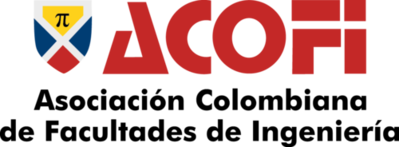Analysis of vulnerability and resilience in electrical distribution systems in the event of a deliberate disruptive event
DOI:
https://doi.org/10.26507/paper.2341Palabras clave:
disrupting agent, genetic algorithm, vulnerability análisis, load shedding, distributed generation, distributed energy resource management, metrics, resilience, response to demandResumen
Este trabajo propone maximizar la resiliencia del sistema eléctrico ante ataques intencionales a través de la implementación de recursos energéticos distribuidos (DER) generación distribuida (GD) y respuesta a la demanda (RD). Se aborda en primera instancia el caso en el que un agente disruptor, tiene como objetivo maximizar el daño a la red (expresado a través del costo total de operación), mientras que el OS toma las medidas necesarias para mitigar los efectos de este ataque. La interacción entre estos dos agentes se modela mediante un problema de optimización de dos niveles. Por un lado, el agente disruptivo se posiciona en el problema de optimización de nivel superior y debe decidir qué elementos dejar fuera de servicio (líneas y generadores) dado un presupuesto limitado. Por otro lado, el OS, ubicado en un problema de optimización de nivel inferior, reacciona al ataque implementando medidas de mitigación para minimizar los sobrecostos en la operación del sistema. Se proponen tres métricas para evaluar la resiliencia mediante la asignación de DER en islas generadas por la destrucción de líneas y generadores., para ello se toman dos casos de estudio, un sistema de prueba de 5 buses y el sistema de prueba IEEE RTS-24 buses.
Descargas
Citas
Amirioun, M. H., Aminifar, F., Lesani, H., & Shahidehpour, M. (2019). Metrics and quantita-tive framework for assessing microgrid resilience against windstorms. International Journal of Electrical Power and Energy Systems, 104(January 2018), 716–723. https://doi.org/10.1016/j.ijepes.2018.07.025
Arroyo, J. M., & Fernández, F. J. (2013). A genetic algorithm for power system vulnerability analysis under multiple contingencies. Studies in Computational Intelligence, 482, 41–68. https://doi.org/10.1007/978-3-642-37838-6_2
Arroyo, J. M., & Galiana, F. D. (2005). On the solution of the bilevel programming formula-tion of the terrorist threat problem. IEEE Transactions on Power Systems, 20(2), 789–797. https://doi.org/10.1109/TPWRS.2005.846198
Bie, Z., Lin, Y., Li, G., & Li, F. (2017). Battling the Extreme: A Study on the Power System Re-silience. Proceedings of the IEEE, 105(7), 1253–1266. https://doi.org/10.1109/JPROC.2017.2679040
Biswas, R. Sen, Pal, A., Werho, T., & Vittal, V. (2021). A Graph Theoretic Approach to Power System Vulnerability Identification. IEEE Transactions on Power Systems, 36(2), 923–935. https://doi.org/10.1109/TPWRS.2020.3010476
Calvete, H. I., Galé, C., & Mateo, P. M. (2008). A new approach for solving linear bilevel problems using genetic algorithms. European Journal of Operational Research, 188(1), 14–28. https://doi.org/10.1016/j.ejor.2007.03.034
Chalishazar, V., Poudel, S., Hanif, S., & Mana, P. T. (2021). Power System Resilience Metrics Augmentation for Critical Load Prioritization, 23. Retrieved from https://www.ntis.gov
Corredor, P. H., & Ruiz, M. E. (2011). Mitigating the Impact of Terrorist Activity on Colom-bia’s Power System. IEEE Power and Energy Magazine, 9(2), 59–66.
Costa, A., Georgiadis, D., Ng, T. S., & Sim, M. (2018). An optimization model for power grid fortification to maximize attack immunity. International Journal of Electrical Power and Energy Systems, 99(January), 594–602. https://doi.org/10.1016/j.ijepes.2018.01.020
Delgadillo, A., Arroyo, J. M., & Alguacil, N. (2010). Analysis of electric grid interdiction with line switching. IEEE Transactions on Power Systems, 25(2), 633–641. https://doi.org/10.1109/TPWRS.2009.2032232
Henry, D., & Emmanuel Ramirez-Marquez, J. (2012). Generic metrics and quantitative ap-proaches for system resilience as a function of time. Reliability Engineering and System Safety, 99, 114–122. https://doi.org/10.1016/j.ress.2011.09.002
Lai, K., Illindala, M., & Subramaniam, K. (2019). A tri-level optimization model to mitigate coordinated attacks on electric power systems in a cyber-physical environment. Applied Energy, 235(August 2018), 204–218. https://doi.org/10.1016/j.apenergy.2018.10.077
Li, H., Jiao, Y., & Zhang, L. (2010). Orthogonal genetic algorithm for solving quadratic bilevel programming problems. Journal of Systems Engineering and Electronics, 21(5), 763–770. https://doi.org/10.3969/j.issn.1004-4132.2010.05.008
Liu, B., Li, Z., Chen, X., Huang, Y., & Liu, X. (2018). Recognition and Vulnerability Analysis of Key Nodes in Power Grid Based on Complex Network Centrality. IEEE Transactions on Circuits and Systems II: Express Briefs, 65(3), 346–350. https://doi.org/10.1109/TCSII.2017.2705482
López-Lezama, J. P. H.-V. B. J. R.-C. J. M. (2020). A Bilevel Attacker-Defender Model for En-hancing Power Systems Resilience with Distributed Generation. Scientia et Technica, 25(4), 540–547. https://doi.org/10.22517/23447214.23721
Descargas
Publicado
Cómo citar
Evento
Sección
Licencia
Derechos de autor 2022 Asociación Colombiana de Facultades de Ingeniería - ACOFI

Esta obra está bajo una licencia internacional Creative Commons Atribución-NoComercial-SinDerivadas 4.0.
| Estadísticas de artículo | |
|---|---|
| Vistas de resúmenes | |
| Vistas de PDF | |
| Descargas de PDF | |
| Vistas de HTML | |
| Otras vistas | |








